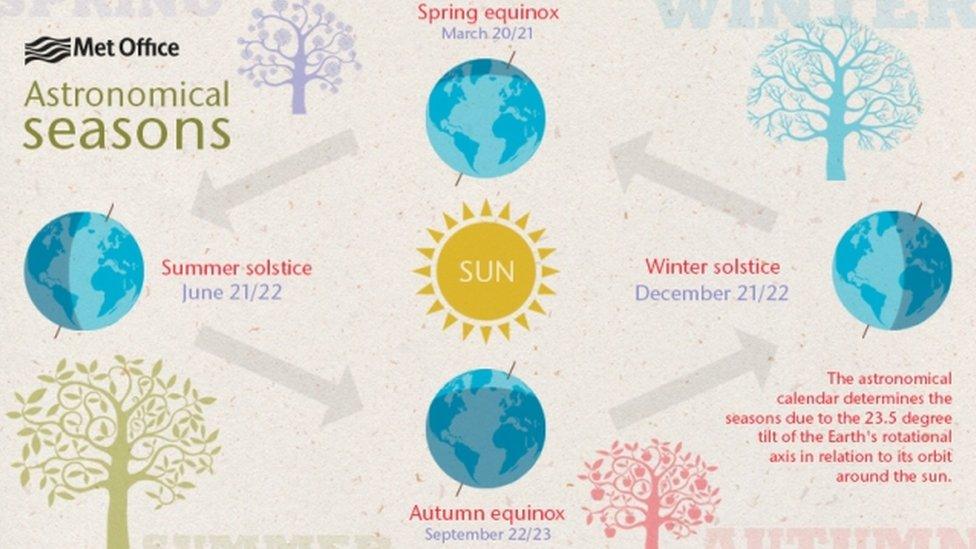Autumn equinox: When does autumn begin?
- Published

This handy diagram can help you to get your head around all the astronomical seasons
It will be the first official day of autumn on Saturday 23 September. It's known as the autumn equinox.
Equinoxes and solstices are key dates in the calendar.
They are used to define the transitional periods between the seasons, so when winter changes to spring, summer to autumn, and so on.
Autumn: We hear why some of you love this time of year
Equinoxes and solstices mark key moments in the Earth's journey around the Sun.
That's because the position of the Sun in relation to the Earth affects the length of days and nights.
In 2022, the autumn equinox takes place on 23 September.
What is an equinox?
WATCH: Equinox - what is it and when is it? (March 2019)
An equinox happens when the amount of daytime is pretty much equal to the amount of night time.
It marks a transition between seasons - so, the spring equinox marks the start of spring, while the autumn equinox marks the start of autumn.
There are two equinox each year, which take place when the Sun is positioned exactly above the equator - once around 20/21 March (spring) and again around 22/23 September (autumn).
The word equinox comes from two Latin words - equi which means equal and nox meaning night.
Visitors arrive to watch the sunrise at the megalithic Mnajdra Temples during the spring equinox in Malta
From the day of the spring equinox, the day is longer than the night.
From the day of the autumn equinox, the night becomes longer than the day.
However, an equinox occurs when day and night are almost completely equal in length. The moment when they are completely equal actually occurs a few days before the spring equinox, and a few days after the autumn equinox. This is called the equilux.
What is a solstice?
The solstice also occurs twice a year.
In the northern hemisphere, there is a summer solstice around 21 June and a winter solstice around the 21 December.
The summer solstice is the day when the northern hemisphere experiences its longest period of daylight all year. The winter solstice is the day when the northern hemisphere experiences its longest period of night all year.
The northern hemisphere is the half of Earth that is north of the equator. The UK is in the northern hemisphere.
During the summer solstice, in the middle of the day, the Sun is at its highest point in the sky that it will be all year.
During the winter solstice, this is reversed and the noon sun is at the lowest point it will be all year.
Because the Northern Hemisphere is tilted towards the Sun, some far northern countries such as Iceland and Norway experience continuous daylight for months on end!
- Published21 January 2019
- Published31 December 2023
- Published20 June 2016
